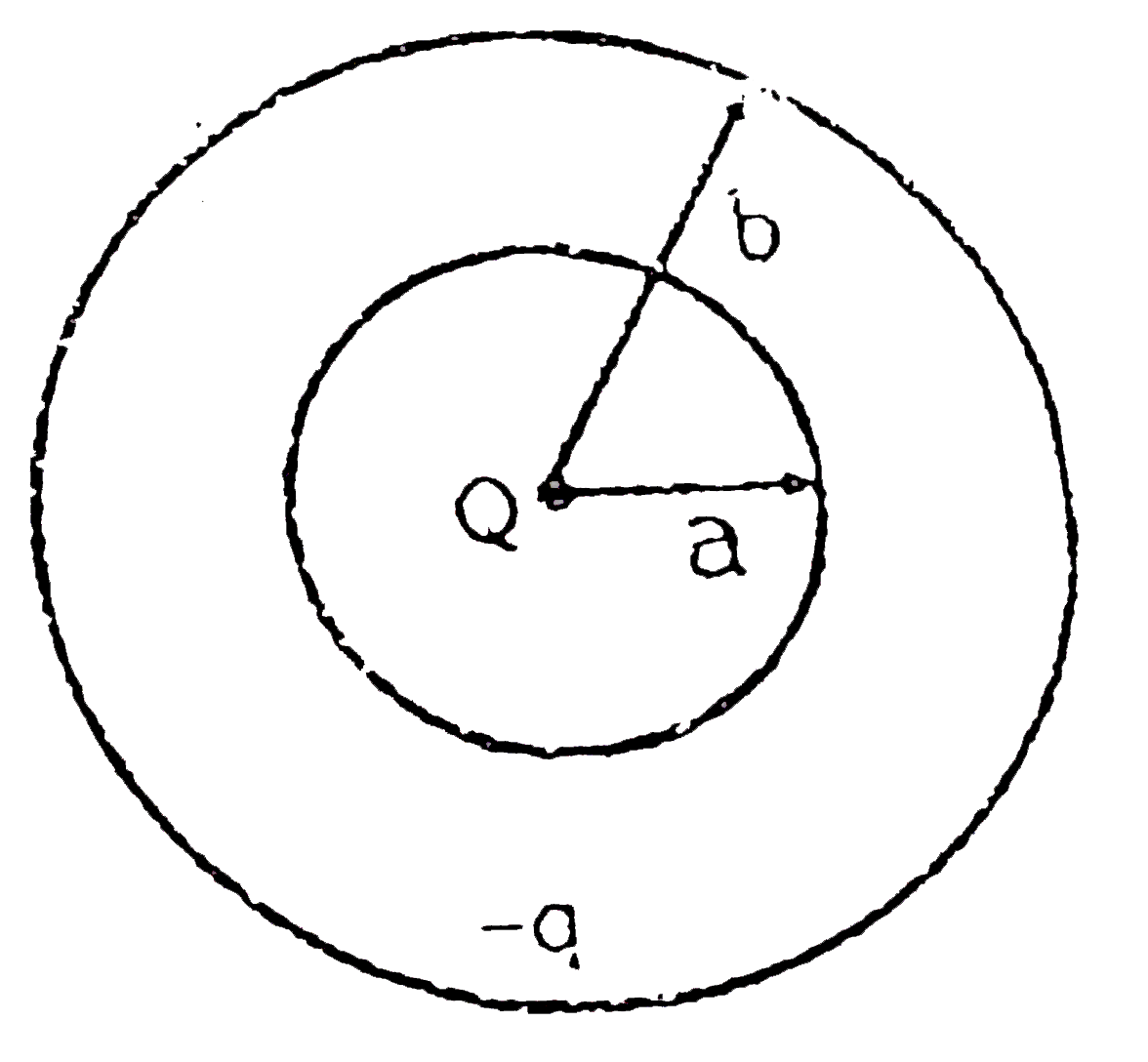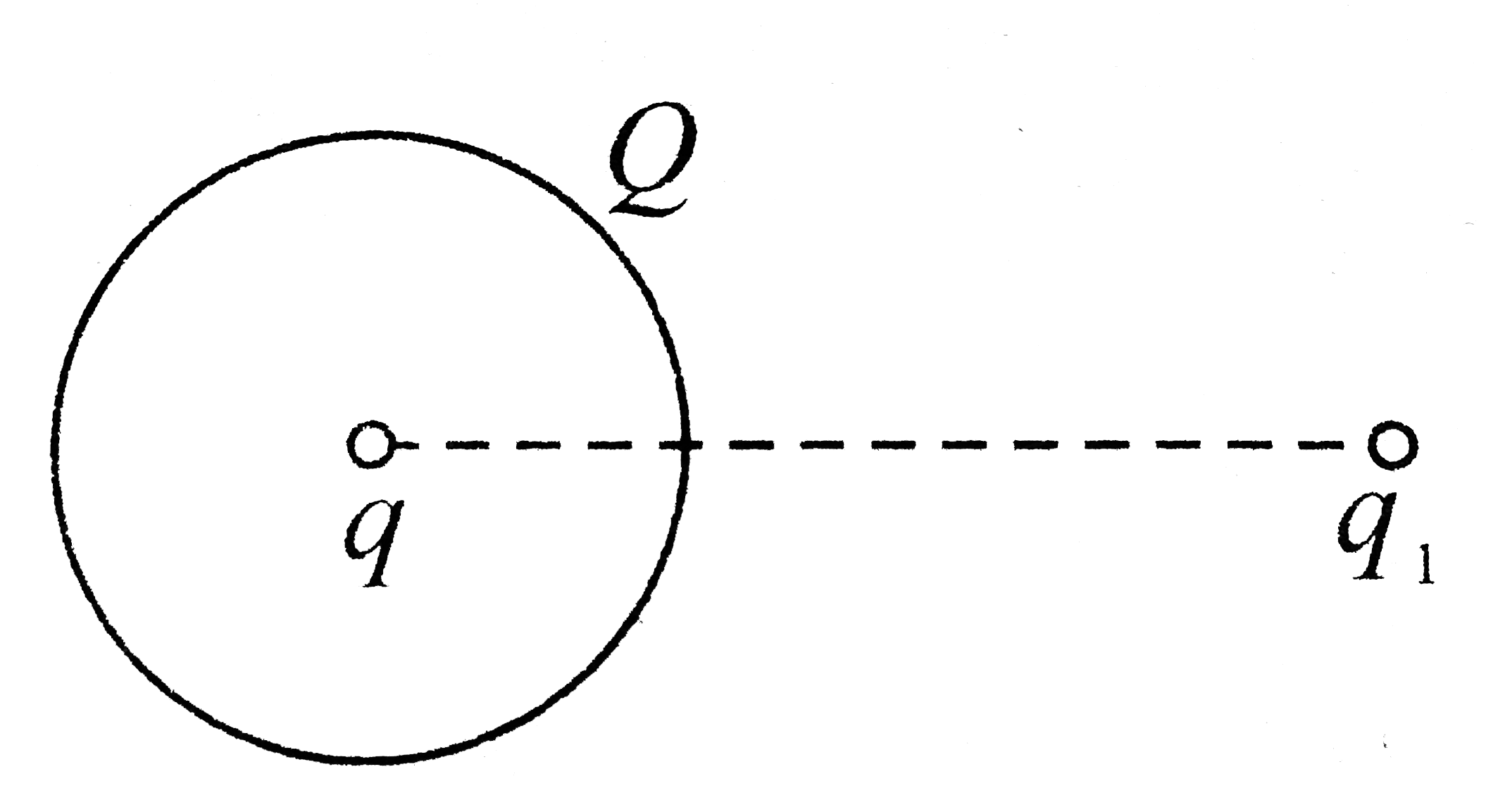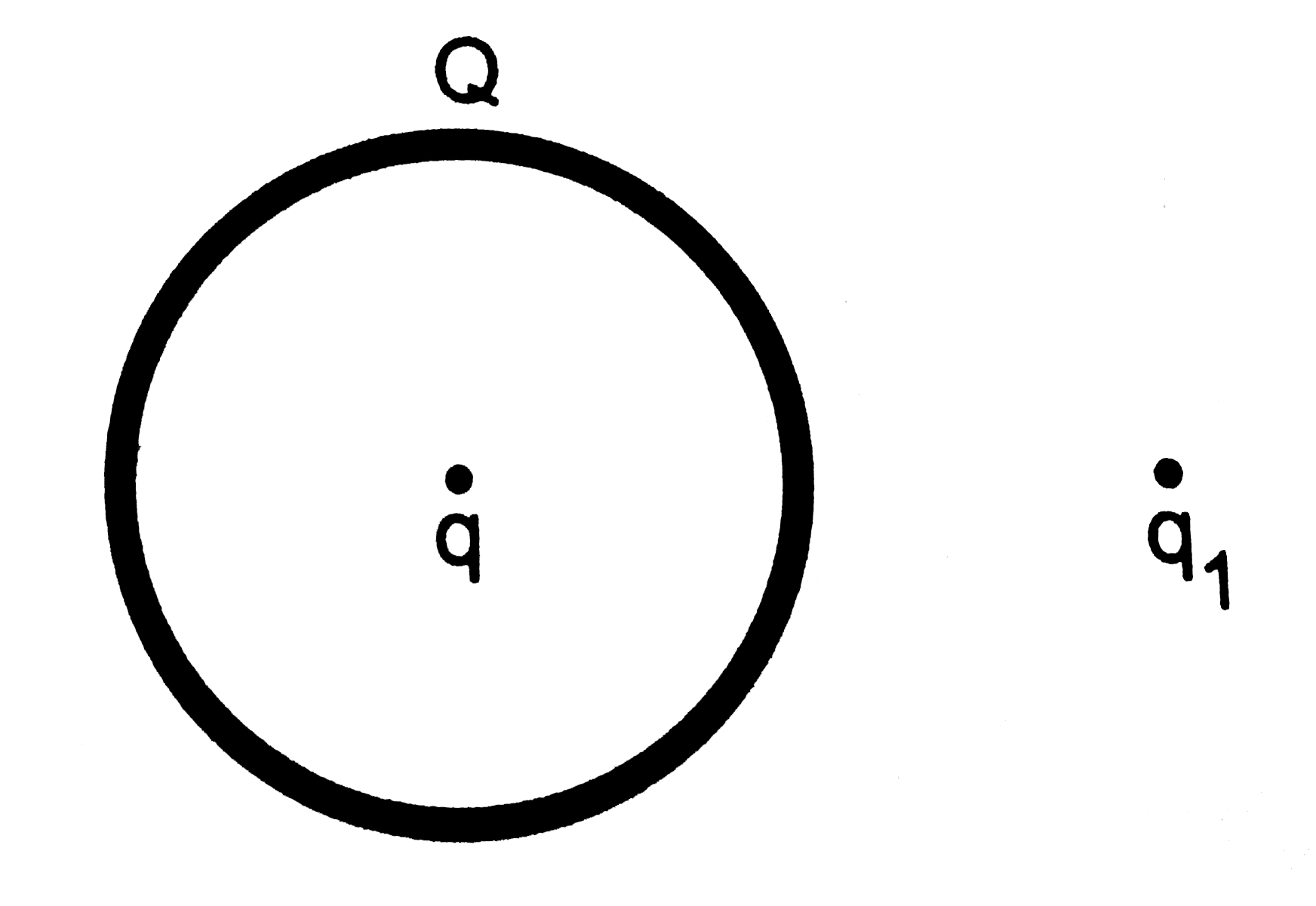A charge q is placed at the centre of the line joining two equal charges Q. The system of the three charges will be in equilibrium if q is equal to:
Q/2
−Q/2
Q/4
−Q/4
The correct Answer is:D
To solve the problem, we need to find the value of the charge q that will ensure the equilibrium of the system consisting of two equal charges Q and a charge q placed at the center of the line joining them.
1. Understanding the Setup:
- We have two equal charges Q placed at a distance 2r apart.
- The charge q is placed at the midpoint, which is at a distance r from each charge Q.
2. Forces Acting on Charge q:
- The charge q will experience electrostatic forces due to both charges Q.
- The force exerted on q by one charge Q is attractive if Q is positive and q is negative (and vice versa).
3. Calculating Forces:
- The force FQ on charge q due to one charge Q is given by Coulomb's law:
FQ=kQ⋅|q|r2
- Since there are two charges Q, the total force on q will be the sum of the forces due to both charges Q.
4. Equilibrium Condition:
- For the system to be in equilibrium, the net force acting on charge q must be zero.
- This means that the force due to the left charge Q must equal the force due to the right charge Q:
FQ1+FQ2=0
5. Setting Up the Equation:
- The force on q due to the left charge Q (let's call it FQ1) is attractive:
FQ1=kQ⋅|q|r2
- The force on q due to the right charge Q (let's call it FQ2) is also attractive:
FQ2=kQ⋅|q|r2
- Since both forces are in the same direction (towards the charges Q), we can write:
FQ1=−FQ2
6. Finding the Value of q:
- The force FQ acting on charge Q due to charge q must balance the forces acting on Q:
kQ⋅|q|r2=kq2(2r)2
- Simplifying this gives:
Q⋅|q|=q24
- Rearranging gives:
4Q⋅|q|=q2
- This can be rearranged to:
q2−4Q⋅|q|=0
- Factoring out q:
q(q−4Q)=0
- This gives us two solutions: q=0 or q=4Q.
7. Considering the Sign of q:
- Since q must be opposite in sign to Q for attraction, we take:
q=−Q4
8. Final Answer:
- Therefore, the charge q that will ensure equilibrium is:
q=−Q4
Conclusion:
The system of three charges will be in equilibrium if q is equal to −Q4.
- We have two equal charges Q placed at a distance 2r apart.
- The charge q is placed at the midpoint, which is at a distance r from each charge Q.
- The charge q will experience electrostatic forces due to both charges Q.
- The force exerted on q by one charge Q is attractive if Q is positive and q is negative (and vice versa).
- The force FQ on charge q due to one charge Q is given by Coulomb's law:
FQ=kQ⋅|q|r2
- Since there are two charges Q, the total force on q will be the sum of the forces due to both charges Q.
- For the system to be in equilibrium, the net force acting on charge q must be zero.
- This means that the force due to the left charge Q must equal the force due to the right charge Q:
FQ1+FQ2=0
- The force on q due to the left charge Q (let's call it FQ1) is attractive:
FQ1=kQ⋅|q|r2
- The force on q due to the right charge Q (let's call it FQ2) is also attractive:
FQ2=kQ⋅|q|r2
- Since both forces are in the same direction (towards the charges Q), we can write:
FQ1=−FQ2
- The force FQ acting on charge Q due to charge q must balance the forces acting on Q:
kQ⋅|q|r2=kq2(2r)2
- Simplifying this gives:
Q⋅|q|=q24
- Rearranging gives:
4Q⋅|q|=q2
- This can be rearranged to:
q2−4Q⋅|q|=0
- Factoring out q:
q(q−4Q)=0
- This gives us two solutions: q=0 or q=4Q.
- Since q must be opposite in sign to Q for attraction, we take:
q=−Q4
- Therefore, the charge q that will ensure equilibrium is:
q=−Q4
The system of three charges will be in equilibrium if q is equal to −Q4.
Topper's Solved these Questions
- ELECTROSTATICSBOOK - DC PANDEY ENGLISHCHAPTER - ELECTROSTATICSEXERCISE - Assertion and Reason
15 Videos
- ELECTROSTATICSBOOK - DC PANDEY ENGLISHCHAPTER - ELECTROSTATICSEXERCISE - Match the columns
5 Videos
- ELECTROSTATICSBOOK - DC PANDEY ENGLISHCHAPTER - ELECTROSTATICSEXERCISE - Check point 1.5
20 Videos
- ELECTROSTATIC POTENTIAL AND CAPACITORSBOOK - DC PANDEY ENGLISHCHAPTER - ELECTROSTATIC POTENTIAL AND CAPACITORSEXERCISE - (C) Chapter exercises
50 Videos
- GRAVITATIONBOOK - DC PANDEY ENGLISHCHAPTER - GRAVITATIONEXERCISE - All Questions
135 Videos
Similar Questions
A charge Q is placed at the centre of the line joining two point charges +q and +q as shown in figure. The ratio of charges Q and q is

View SolutionTwo idential point charges Q are kept at a distance r from each other. A third point charge is placed on the line joing the above two charges such that all the three charges are in equilibrium. The third charge
(a) should be of magnitude q=………..
(b) should be of sign .......
(c ) should be placed ........ .
View SolutionIf Two charges +qand+4q are separated by a distance d and a point charge Q is placed on the line joining the above two charges and in between them such that all charges are in equilibrium. Then the charge Q and it's position are
View SolutionShown in the figure a spherical shell with an inner radius 'a' and an outer radius 'b' is made of conducting metarial. A charge +Q is placed at the centre of the spherical shell and a total charge -q s placed on the shell. Charge -q is districuted on the surfaces as :

View SolutionA thin metallic spherical shell contains a charge Q on it. A point charge q is placed at the center of the shell and another charge q1 is placed outside it as shown in the figure. All the three charges are positive. Find the force on the charge

a. at centre due to all charges.
b. at center due to shell.
View SolutionTwo point charges +q and −q are placed a distance x apart. A third charge is so placed that at the three charges are in equilibrium. Then
View SolutionThree positive charges of equal magnitude q are placed at the vertics of and equilatral triangle of side l. How can the system of charges be palced in equilibrium?
View SolutionAssertion At the centre of the line joining two equal and opposite charges, E=0
Reason At the centre of the line joining two equal and similar charge, E≠0.
View SolutionA charge Q is place at each of the opposite corners of a square. A charge q is placed at each of the other two corners. If the net electrical force on Q is zero, then Q/q equals:
View SolutionA thin. Metallic spherical shell contains charge Q on it. A point charge q is placed at the centre of the shell and another charge q1 is placed outside it as shown in figure . All the three charges are positive. The force on the charge at the centre is

View Solution
